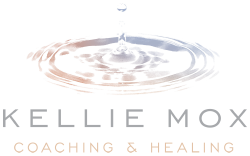I remember trying to make myself smaller in various ways throughout my youth. At sixteen years old, this meant making myself thinner. I never intended to take up so little space, but my brain became addicted to the drug that is starvation. And later in my adult life, despite trying to gain weight, Lyme disease robbed my pancreas of enzyme production and thwarted my efforts. While I’ve healed through both challenges, I’ve recently come to understand that this theme still permeates my life, albeit in different ways.
I’ve been addressing the foundations of healing for years. Only recently, after enhancing my nervous system regulation and diving deeper into my unconscious beliefs and patterns, have I understood the depth and breadth of my challenges with taking up space. I know that I’ll always be learning my life lessons on progressively deeper levels, yet it surprised me to connect with this theme so acutely again. Maybe I shouldn’t be surprised—through my connections with other healing women, I’ve learned this is not a unique-to-me phenomenon. How and why we make ourselves small varies, but it’s clear that learning to take up space is an integral part in any healing or growth journey.
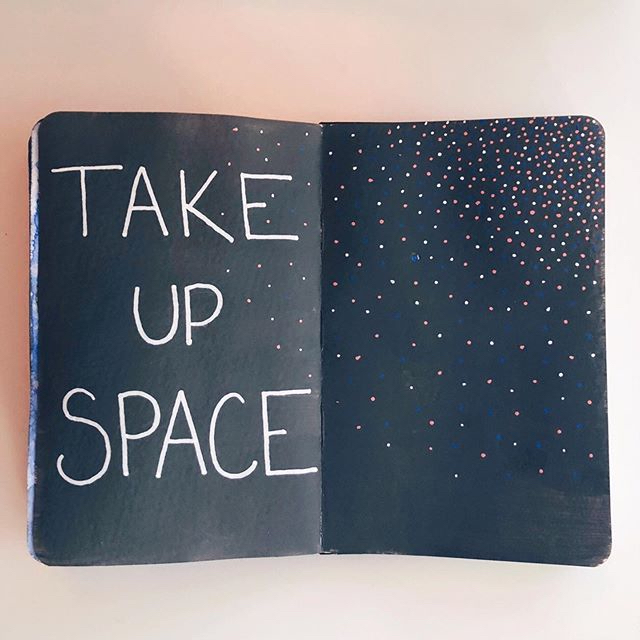
So, what does it mean to take up space? How do you know if you’re making yourself small? Here are a few things that stand out for me. Let’s add to this list. Please share in the comments other ways you notice this showing up in your life.
For me, taking up space means…
Allowing myself to be seen in my personal and professional relationships.
Thoughtful vulnerability (being vulnerable in situations that call for it and with people who are safe) is imperative for growth, healing, and connection. Expressing ourselves and offering our gifts allows us to be seen, and it requires a certain level of thoughtful vulnerability. I considered myself fairly well-practiced in thoughtful vulnerability, especially in the personal realm, and yet, birthing this business and putting my work out in the world has given me the opportunity to grow even more in this area. I’m learning that being seen also means valuing my contributions and waking up to where I’m not believing in myself.
Giving myself permission to own my experience of a situation and know that it is valid, even when it conflicts with someone else’s experience.
Taking up space with our energy or by communicating our thoughts and feelings is difficult if we don’t believe that our thoughts and feelings are valid. We may be uncomfortable with taking up space in this way if we believe relationships are fragile or if we don’t feel a sense of safety because of past trauma. Whatever the reason, it might mean silencing ourselves so we don’t risk upsetting others or creating conflict. Or it might mean constantly questioning our own perspectives and decisions. I’ve been exploring this for years, as it relates to a fundamental part of healing—self-trust. More and more, I’m able to bring these patterns of questioning or silencing myself into my consciousness and notice if they are impacting my behaviors or sense of well-being.
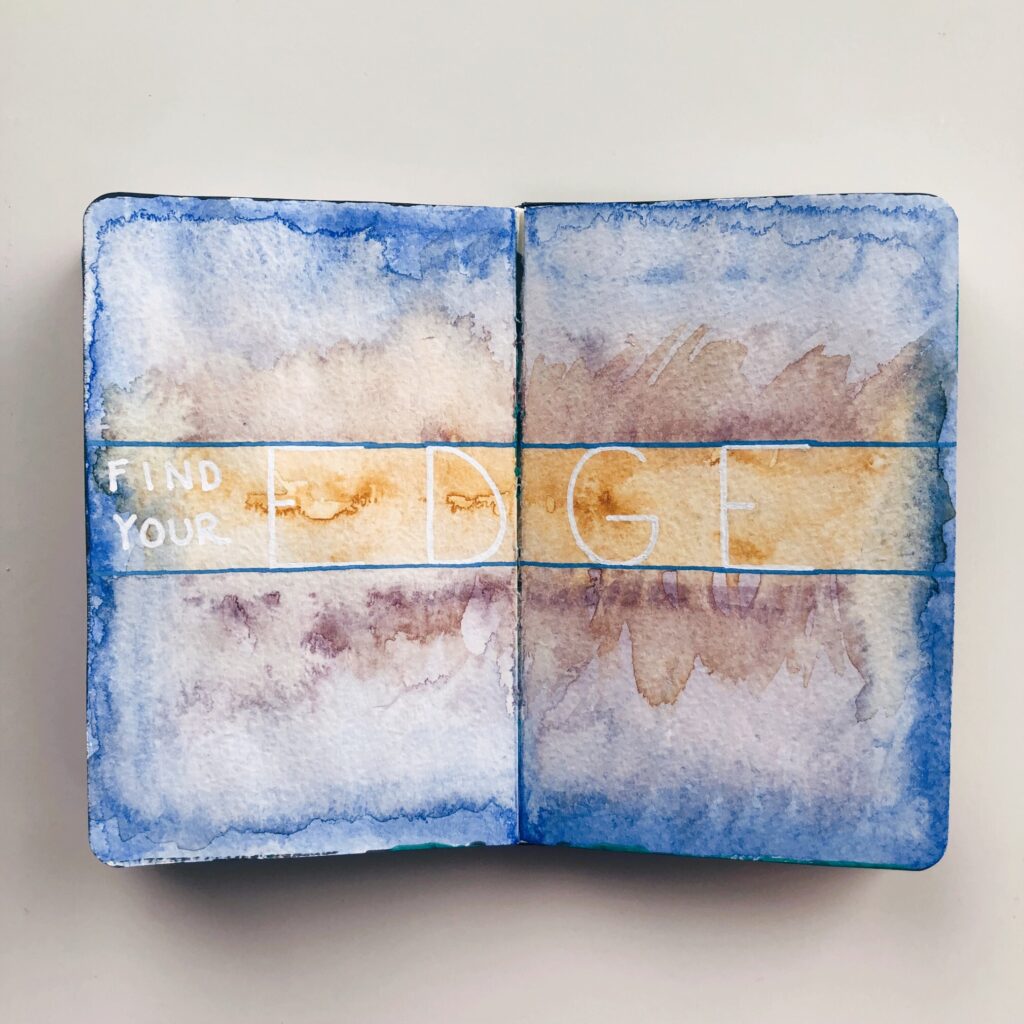
Sensing my energetic edge or boundary and allowing this to create a cushion around me.
For those of us who are sensitive and perceptive empaths, finding our edge is important, because we must know where we end and where another begins. This applies to our physical, emotional, and energetic space. If we aren’t grounded in our own physical, emotional, and energetic boundaries, we may have a tendency to merge with others or completely abandon others for fear of being consumed by their energy. This has been a major focal point of my practice of late, and I’m noticing just how much my ability to sense and cultivate my boundaries impacts my sense of internal peace and my relationships.
Building a greater sense of safety, comfort, and trust in my body and allowing my body to be a compass that guides me.
Feeling safe in, comfortable with, and guided by our bodies is imperative for health and healing. If we don’t feel safe, we may cope by making ourselves small so that we can go unnoticed. This may serve in present-moment danger, but when that danger has passed it no longer serves us. When we don’t feel safe or comfortable in our bodies, it may show in our posture, weight, tone and volume of voice, emotions, and general self-expression. Also, if our bodies have experienced pain or discomfort or if we’ve felt betrayed by our bodies, we may disconnect from its messages. I have a history of living in my head and allowing my mind to control my body. Ignoring our body’s needs and urges for sleep, nourishment, or movement, and over-indulging in alcohol, sugar, or other drugs is common when we’ve disconnected from the body’s messages. Even over-working, staying busy, or obsessing can be a sign of disconnection. I’ve been learning about the power of scheduling pauses throughout my day to check-in with and listen to my body, which builds a sense of safety and trust. This work is a physical, emotional, and energetic effort.
Embody
This theme of taking up space has whispered to me in various ways over the last few months. And it came up over and over in my reflection and visioning exercises for the New Year. Taking up space, coupled with some other themes that emerged from the exercises, led me to EMBODY as my theme for 2020. I let my theme inform the intentions I set for myself (read my recent blog on why it’s important to set intentions), and it will guide me through the year.
When we connect with a theme, we have both a guide for our future-focused efforts, and we have a point of reference to help us navigate life as it’s happening. A theme can help direct our decision-making, intention-setting, and action steps. And–I’ll bring us full circle here–I would argue that having a theme sets the stage for us to take up space in our lives.
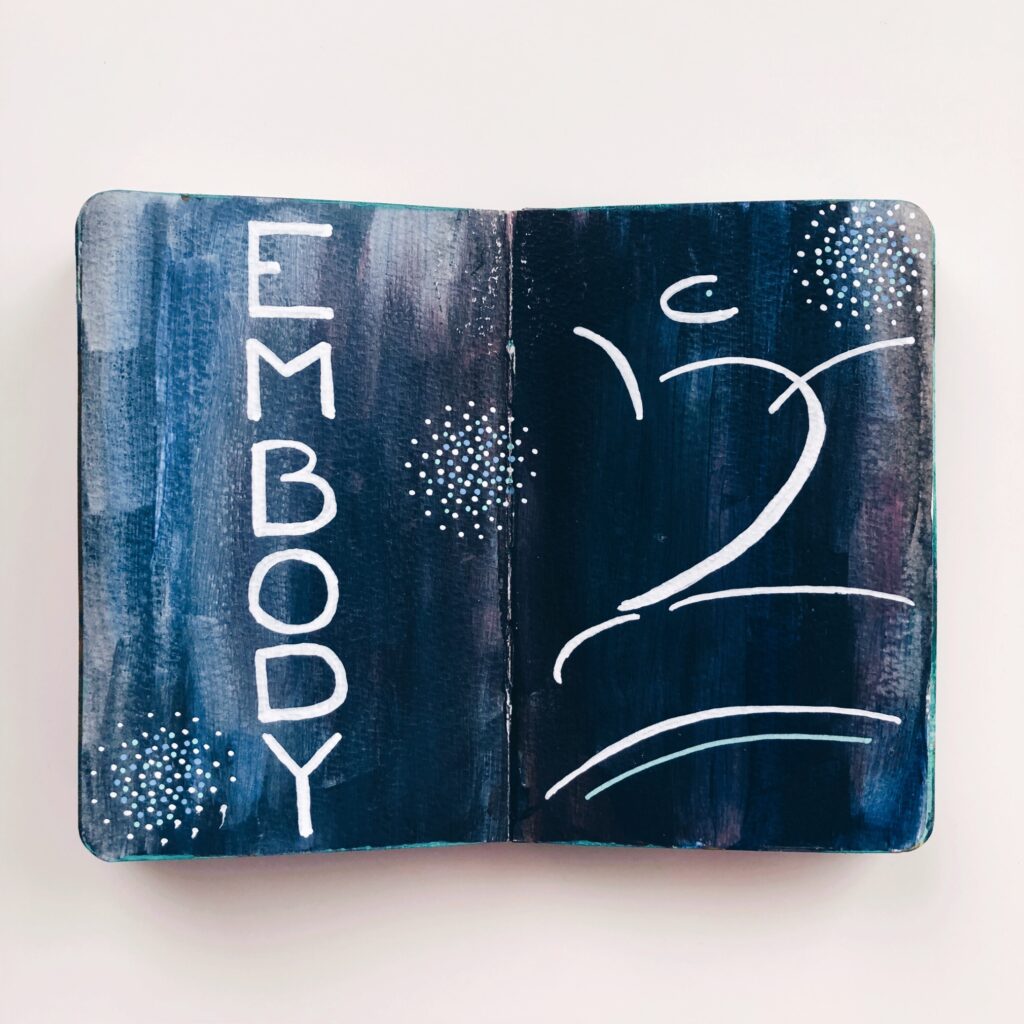
I played in my art journal, creating a picture of my theme and some of the phrases that hold power for me now. And, I got creative with my intention-setting, painting my intentions in ten areas of my life and for my relationships. The prompts for these exercises are available to you now, too!
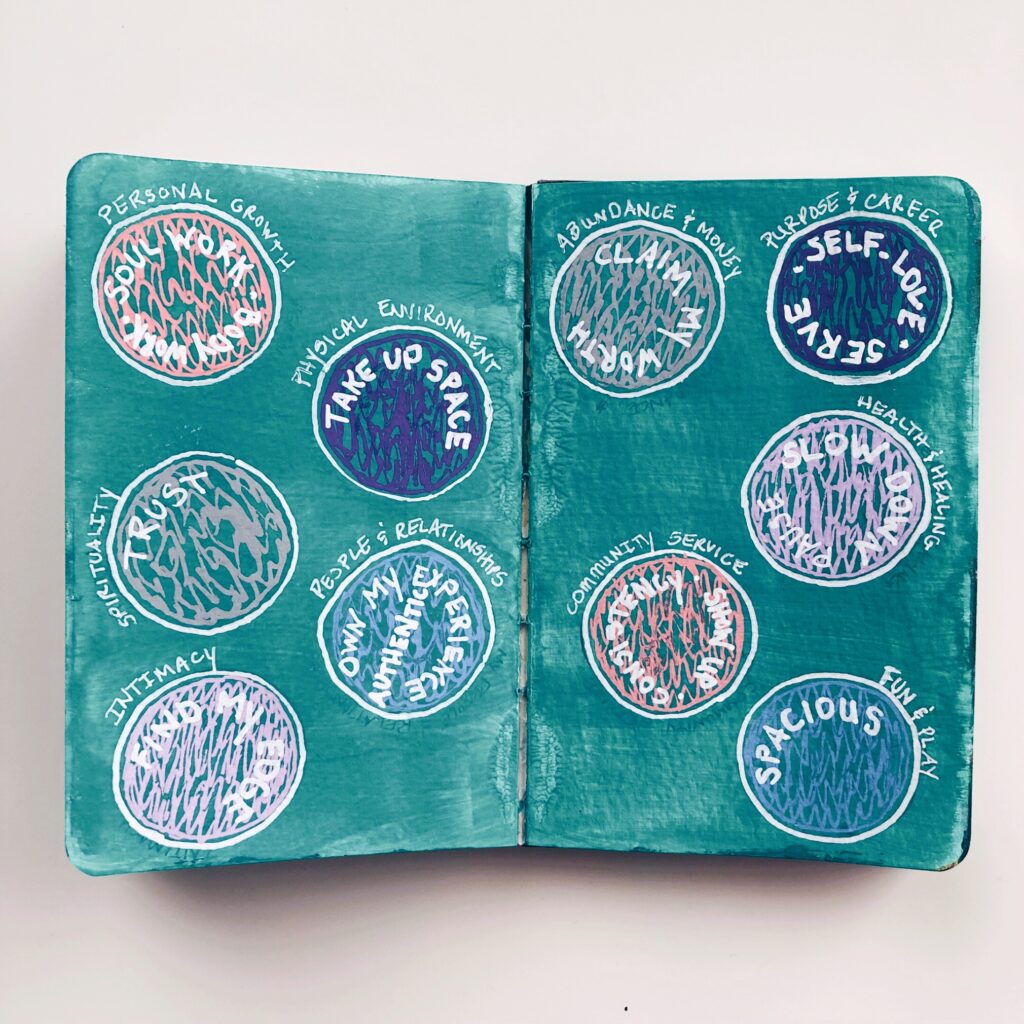
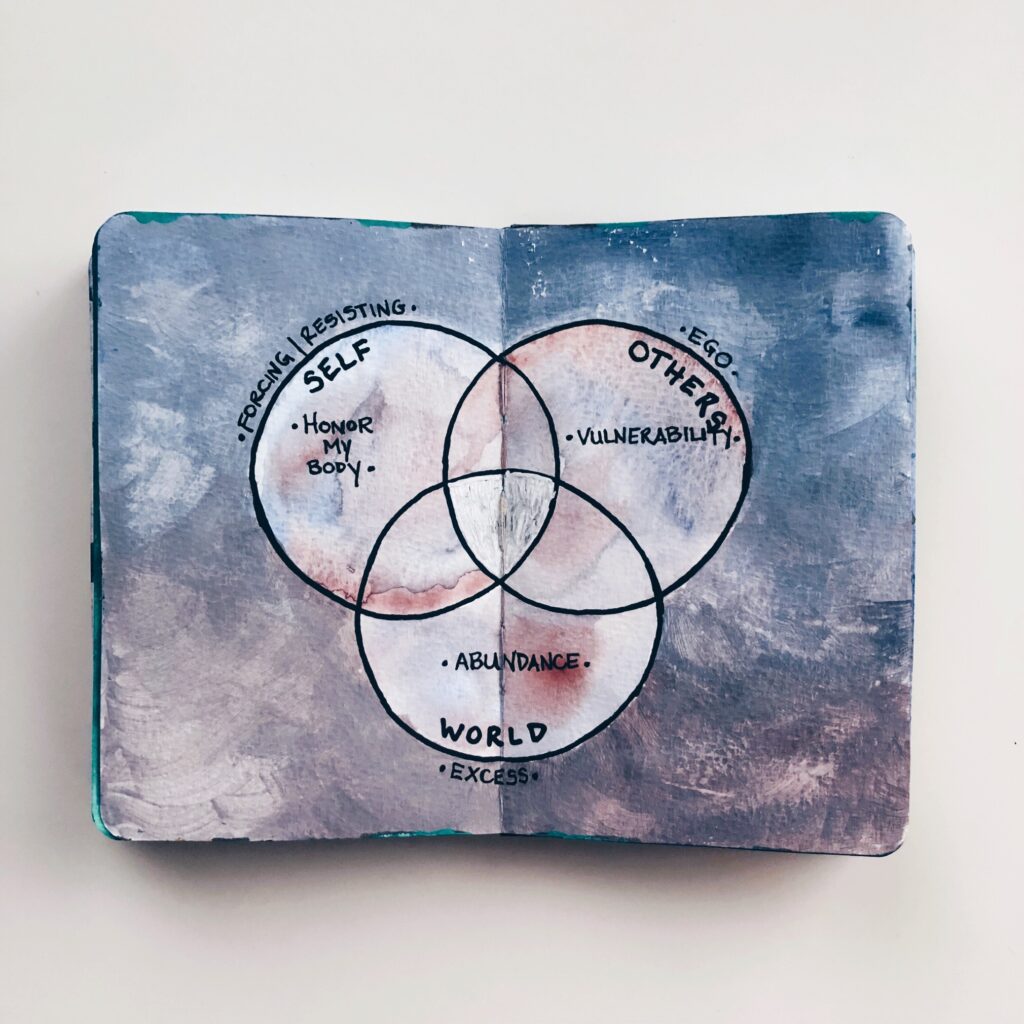
Declare Your Theme, Claim Your Space
After playing with several reflection and visioning questions, prompts, and exercises this year, I compiled my favorites and created a free workbook that you can download during the month of January by signing up for my newsletter (yes, I’m hoping you’ll visit me more often and become a part of this healing community so we can have more conversations about coaching and healing)! If you’re already subscribed, you’ll get a link to the download in my January newsletter. This workbook will guide you through reflecting on 2019 and creating a vision, theme, and intentions for a revolutionary new year. Any questions? Comment below or send me an e-mail. I’d love to hear from you!
